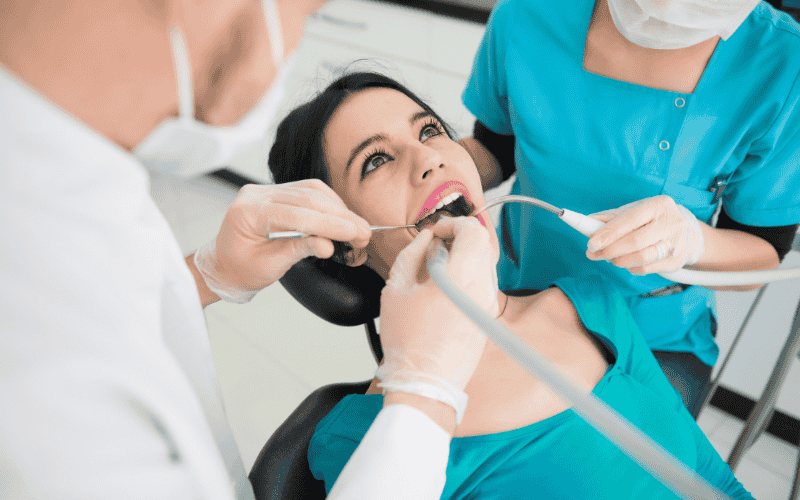
Dental emergencies can strike at any time, causing intense pain and anxiety. Understanding how to address these emergencies quickly can make all the difference. Knowing about emergency dental treatments allows you to seek immediate relief and prevent further complications.
This post covers essential treatments, including pain relief techniques, immediate procedures, and when to seek emergency care.
Common Dental Emergencies
- Toothache: Toothaches can stem from cavities, gum disease, or dental trauma. Symptoms may include sharp pain, sensitivity to temperature, or swelling around the tooth.
- Broken or Chipped Teeth: Accidents, sports injuries, or biting down on hard foods can lead to broken or chipped teeth. These issues often result in pain and increased sensitivity.
- Knocked-Out Tooth: A knocked-out tooth can occur due to trauma or falls. If this happens, act quickly. Hold the tooth by the crown, rinse it gently, and try to reinsert it into the socket. If that is not possible, store it in milk or saline until you can see a dentist.
- Lost Filling or Crown: Fillings and crowns may come loose due to wear or trauma. This situation can expose the tooth to decay further and sensitivity, requiring immediate attention.
- Abscess or Infection: An abscess often appears as a painful swelling on the gums. It may indicate a serious infection that requires immediate treatment. Other signs include fever and a bad taste in the mouth.
Top Emergency Dental Treatments
Dental emergencies can be overwhelming, but knowing how to manage them effectively can provide immediate relief. Below, we outline essential pain relief techniques and immediate dental procedures to address common dental emergencies.
Pain Relief Techniques
- Over-the-Counter Pain Relievers:
Managing pain is often the first priority when faced with a dental emergency. Over-the-counter (OTC) pain relievers such as ibuprofen, acetaminophen, or naproxen can significantly help. These medications work to reduce inflammation and alleviate pain.
Always follow the recommended dosage on the packaging. If pain persists despite medication, it is essential to seek professional help as this may indicate a more severe issue requiring immediate dental treatment.
- Home Remedies:
There are several effective home remedies for temporary relief while waiting for a dental appointment:- Saltwater Rinse: A warm saltwater rinse is a natural way to clean the mouth and reduce inflammation. Mix one teaspoon of salt in a cup of warm water and swish it around in your mouth for about 30 seconds before spitting it out. This rinse can help soothe gum irritation and reduce bacteria in the mouth.
- Cold Compress: Applying a cold compress to the outside of the cheek can numb the area and reduce swelling. Wrap ice in a cloth or use a bag of frozen peas, applying it for 15-20 minutes. This method is particularly effective for toothaches or injuries involving swelling.
- Clove Oil: Clove oil has natural analgesic properties and can be applied to the affected area using a cotton ball. Its active ingredient, eugenol, can help numb pain temporarily. However, this is only a short-term solution and not a substitute for professional dental care.
Immediate Dental Procedures
- For Toothaches:
Toothaches can result from various issues, including cavities, gum disease, or dental trauma. If OTC pain relief and home remedies do not alleviate the discomfort, it may be time to consider professional treatment. Root canal treatment is a common procedure for severe toothaches. This treatment involves removing the infected or damaged pulp from inside the tooth, cleaning the space, and sealing it.- Pulpotomy is another procedure often performed on children. It involves removing the infected pulp from the tooth’s crown while leaving the root pulp intact. Both procedures can save the tooth and effectively relieve pain.
- For Broken or Chipped Teeth:
A broken or chipped tooth can be painful and may affect your ability to eat or speak. The first step is to rinse your mouth with warm water and apply a cold compress to reduce swelling. After that, seek dental attention.- Dental Bonding is an effective way to repair minor chips. A tooth-colored resin is applied to the affected area, shaped to match the surrounding tooth, and then hardened with a special light. This procedure can often be completed in one visit.
- Crowns may be necessary for more significant damage. A crown is a cap placed over a tooth to restore shape and function. The dentist prepares the tooth, takes impressions, and places a temporary crown until the permanent one is ready.
- For Knocked-Out Teeth:
A knocked-out tooth is a dental emergency that requires immediate action. If you lose a tooth, handle it carefully by the crown and avoid touching the root. If it is dirty, rinse it gently with water, but do not scrub it.- Try to reinsert the tooth into the socket. If that is not feasible, place the tooth in a container of milk or saline solution to keep it moist. Seek dental care within 30 minutes for the best chance of re-implantation. Dentists can reinsert the tooth and stabilize it for healing.
- For Lost Fillings or Crowns:
Losing a filling or crown can leave the tooth vulnerable to decay and sensitivity. If this happens, rinse your mouth with warm saltwater to clean the area.- Temporary solutions, such as dental cement or over-the-counter dental adhesives, can help hold the filling or crown in place until you see a dentist. These products are available at pharmacies and can provide relief from sensitivity. Schedule an appointment as soon as possible to have a permanent solution.
- For Abscesses:
An abscessed tooth is often characterized by severe pain, swelling, and sometimes fever. This condition indicates an infection that requires urgent care.- Treatment usually involves draining the abscess to remove pus and relieve pressure. Your emergency dentist Edmonton will likely prescribe antibiotics to fight the infection. Following the prescribed treatment plan is crucial to prevent the infection from spreading. Ignoring an abscess can lead to more severe health issues, including systemic infections.
When to Seek Emergency Dental Care?
Certain signs indicate an urgent need for professional help. Severe pain that disrupts daily activities warrants immediate attention. If you experience uncontrolled bleeding or swelling, seek help right away. Additionally, a tooth that is loose or knocked out requires urgent dental care.
It is essential to differentiate between urgent and non-urgent dental issues. For example, a minor toothache might not require immediate action, but severe pain should not be ignored. Non-urgent issues, like a lost retainer, can wait for regular office hours. Always err on the side of caution when dealing with potential emergencies.
Preventive Measures
Preventive care can significantly reduce the likelihood of dental emergencies. Schedule regular check-ups with your dentist to catch issues early. Daily brushing and flossing help maintain healthy teeth and gums, reducing the risk of decay.
Additionally, wearing a mouthguard during sports can protect your teeth from injuries. This simple step can save you from serious dental problems and unnecessary pain.
Being prepared for dental emergencies is crucial for maintaining oral health. Knowing the signs and treatments can provide immediate relief and prevent further issues. Stay informed about your dental health, and always know your emergency contacts for swift assistance when needed. Do not let dental emergencies catch you off guard—be proactive about your dental care!



